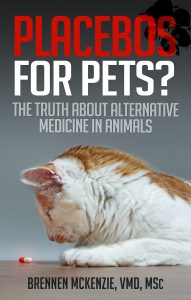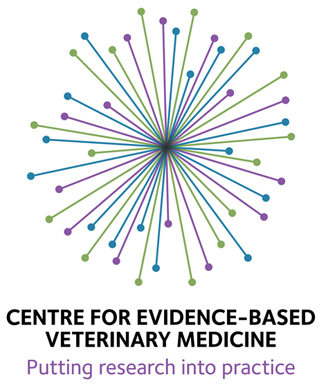In June I reported on a systematic review of the behavioral effects of pheromones on dogs and cats. That review examined all the studies to date on pheromone products such as Feliway and DAP (dog appeasing pheromone) and concluded that there was almost no real evidence that these products had meaningful behavioral effects. There is an abundance of literature, most of it produced or at least funded by the companies selling these products, that they have some measurable effects on any number of physical or behavioral measures. But that is entirely different from demonstrating that they actually make pets feel or behave better.
A new study has been published in the most recent Journal of the American Veterinary Association, examining whether or not DAP has an effect of indicators of stress or pain in healthy shelter dogs undergoing routine spaying and neutering:
Siracusa C, Manteca X, Cuenca R, del Mar Alcala M, Alba A, et al. Effect of a synthetic appeasing pheromone on behavioral, neuroendocrine, immune, and acute-phase perioperative stress response in dogs. Journal American Veterinary Medical Association 2010;237(6):p. 673-81.
This is a nicely designed study of 46 dogs in residence at an animal shelter in Spain for at least 20 days. There is no indication of how the dogs were chosen, though the exclusion criteria for the study are clear and appropriate, and the treatment (DAP or an appropriate placebo) was randomly assigned. Investigators were effectively blinded to the treatment assignments.
A large variety of behavioral and physiological variables were assessed. Subjects were videotaped in their usual environment, and then in the surgical area before and after surgery. These videotapes were scored after the fact for 31 behavioral variables. In addition, a previously described interactive test for evaluation of pain was performed after surgery.
Putative physiologic measures of stress (salivary cortisol levels, prolactin levels, white blood cell counts, blood glucose levels, and acute-phase protein levels) were measured before and after transfer of the subjects to the surgical area and after surgery. Having done research on behavioral enrichment and well-being in captive primates prior to veterinary school, I am aware that there are problems with the utility and reliability of these variables in assessing stress or well-being, but they are commonly used and reasonable markers as long as their weakness are kept in mind.
The results were a significant difference between groups for the change in two behavioral variables, visual exploration and alertness. DAP-treated subjects appeared to have less of a decrease in these behaviors after surgery than placebo-treated dogs. The significance of this isn’t really clear. The groups did not differ in any other behaviors, including those more seemingly relevant to discomfort or stress such as vocalizing, licking oneself, moving around, etc. There was also no difference between the groups in pain as assessed by the interactive assessment used in this study.
Of the physiologic variables, the ones traditionally associated with stress (again, with much debate among ethologists about their usefulness), such as cortisol levels and lymphocytes counts, did not differ between the groups. The only physiologic variable that did differ was the level of prolactin in the blood.
Prolactin is a hormone usually associated with nursing, as it is released in response to suckling and is involved in stimulating the release of milk. It does have some other behavioral affects associated with reproduction and maternal care behaviors, but its significance in terms of stress or pain is not clear. Some changes in blood levels have been associated with stressors such as surgery or with the presence of behavioral problems, such as anxiety disorders, but the role of prolactin in behavior and stress is not well characterized.
So in this small but well-designed and conducted study, we see a couple of variables apparently affected by the presence of the DAP, though none of those usually associated with the negative aspects of the surgical experience, such as pain or activation of the stress response system as reflected in cortisol levels. What can we conclude from this? Well, in these dogs under these circumstances, DAP diminishes the decrease in prolactin levels following surgery, and it might have some impact on general alertness and looking around.
Does this have any meaningful significance for the comfort or well being of the dogs in the study, or other patients in similar circumstances? Not that we can conclude from these results. The fact that an intervention appears to do something is a big leap from the kinds of claims made by the manufacturer of the commercial DAP product. These marketing materials describe this as “the secret to happy dogs” and suggest “It is strongly advised that puppies wear a DAP® Collar throughout the socialisation period (from 6-16 weeks) to prevent fear and stress which may lead to anxiety-related behavioural problems later in life [and] to dramatically influence a puppy’s development and help it grow into a well-behaved and confident adult dog.” A good bit beyond the kind of real data seen in this paper or the previous review of the published literature.
It is possible that purified or synthetic pheromones may ultimately have a role to play in treating behavioral problems in dogs and cats, or in otherwise ameliorating the stresses associated with illness and medical care. But the products currently on the market, and widely used, have so far not done a very impressive job of proving their value. Harmless? Probably. But also perfect candidate for placebo-by-proxy effects, making owners and veterinarians feel better rather than our patients.









